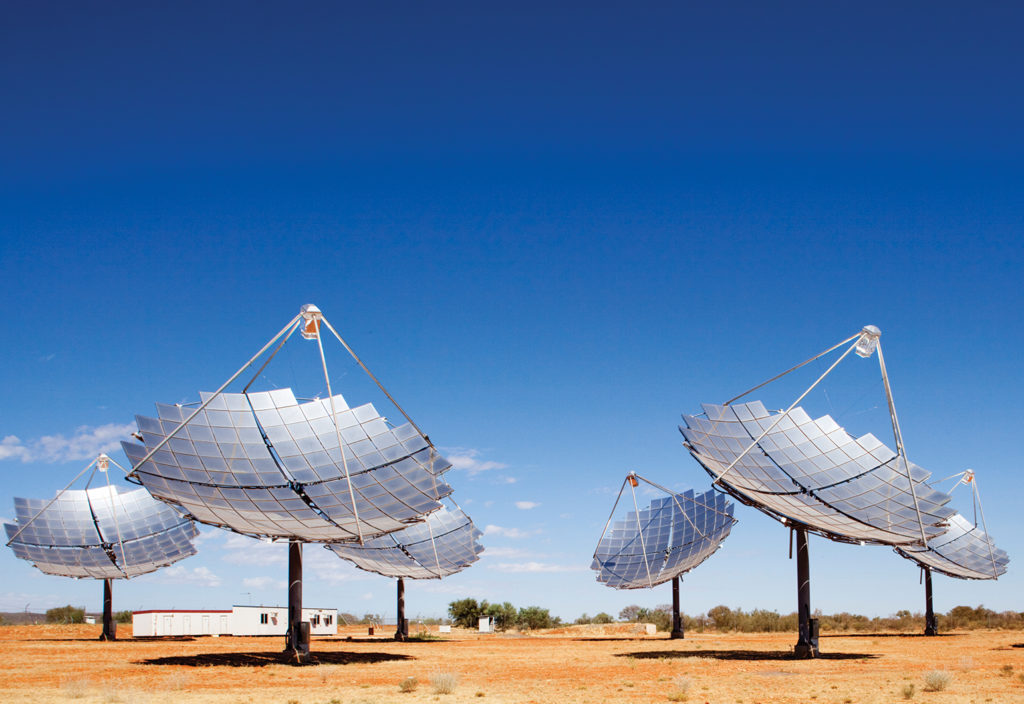A framework is being developed that could place Australia at the centre of the Asia Pacific’s future energy map through the use of renewables. So how might this work?
There are many different drivers for the success of renewable and zero-carbon energy projects in Australia, said Steve Rodgers, Senior Policy Adviser with Engineers Australia.
We’re leaps and bounds ahead of every other nation when it comes to rooftop solar installations, and there has also been an enormous uptake in large-scale solar farms, he said. Battery storage is beginning to catch on, particularly with Elon Musk’s very large, record breaking lithium-ion battery in South Australia. And industry and government are also beginning to take hydrogen seriously.
“These all have various causes, whether it be subsidies to households driven by the Renewable Energy Target or mass deployment in overseas markets that have driven costs down the curve,” Rodgers said.
“New technologies are coming through that make new ideas possible, or bring down the cost of production, storage or transport. Now we have found ourselves in this spot and we’re reacting to something that has a global impetus, and we can choose to ride the wave.”
Renewables provide a new pathway and set of opportunities for Australia to maintain its role as an energy superpower, Rodgers said. In other words, they provide an energy creation mechanism that could enable export substitution for coal and LNG, which will increasingly come under pressure from climate change policy.
“For engineers, this is an innovation challenge aimed at boosting Australia’s productivity. Innovation in new infrastructure leads to capital deepening – creating more value from the same investment in productive capacity. This is different from capital widening: building more of the things that we are already good at doesn’t increase overall efficiency or our competitive advantage.”
Australia at the centre
Dr Fiona Beck, a senior research fellow and ARC DECRA Fellow at ANU’s College of Engineering and Computer Science, is the convenor of the Hydrogen Fuels Project in the Energy Change Institute’s Zero-Carbon Energy for the Asia-Pacific ANU Grand Challenge.
She said there are two or three good reasons that Australia could find itself at the centre of a zero-carbon energy economy.
One is to do with our geography.
“We’re at a latitude and longitude that means we are incredibly lucky with our renewable resources,” Beck said.
“We already have some of the cheapest renewable energy in the world.”
She added another reason is Australia has few space considerations, which brings the possibility to vastly expand renewable energy capacity.
“The corollary to that is we have a renewable energy industry that has made a remarkable acceleration over the last four or five years,” she said.
Finally, we are already an energy powerhouse. Australia is the third largest energy exporter in the world (“I couldn’t believe that when I heard it,” Beck said, “so I triple-checked, and it’s true.”).
This means Australian industry and government already knows how to provide the world with energy. We have built the relationships and developed the logistics and infrastructure – for fossil fuels, at least. We’re good at moving valuable commodities and making complex agreements with foreign territories.
Perhaps most importantly, we have the trust and respect of other nations, thanks to our past performance.
“That is a huge tick,” Beck said.
“Plus, our location in the world means we’re very close to a bunch of very energy-hungry nations that might not be able to provide their own electricity, renewable or not.”
Facilitating links
As Australia’s shift to exporter of renewable energy plays out, engineers will be central to the process.
Beck, a physicist and electrical engineer, said the work won’t only be in the academic field, it will be in an environment that will have to consider economic realities, stakeholder groups, politics, local communities and much more. Engineers will be vital to its success.
“We’re not just looking for the best scientific solution,” she said.
“We’re looking for the best real-life solution, and that’s what engineers do. We are not just looking for an answer to a problem, we are looking for the best answer and the best application of the knowledge that we already have. And the best people to understand the needs of a multi-disciplinary project are engineers.”
Read our coverage of the Zero-Carbon Energy for the Asia-Pacific ANU Grand Challenge in the upcoming April issue of create magazine.
